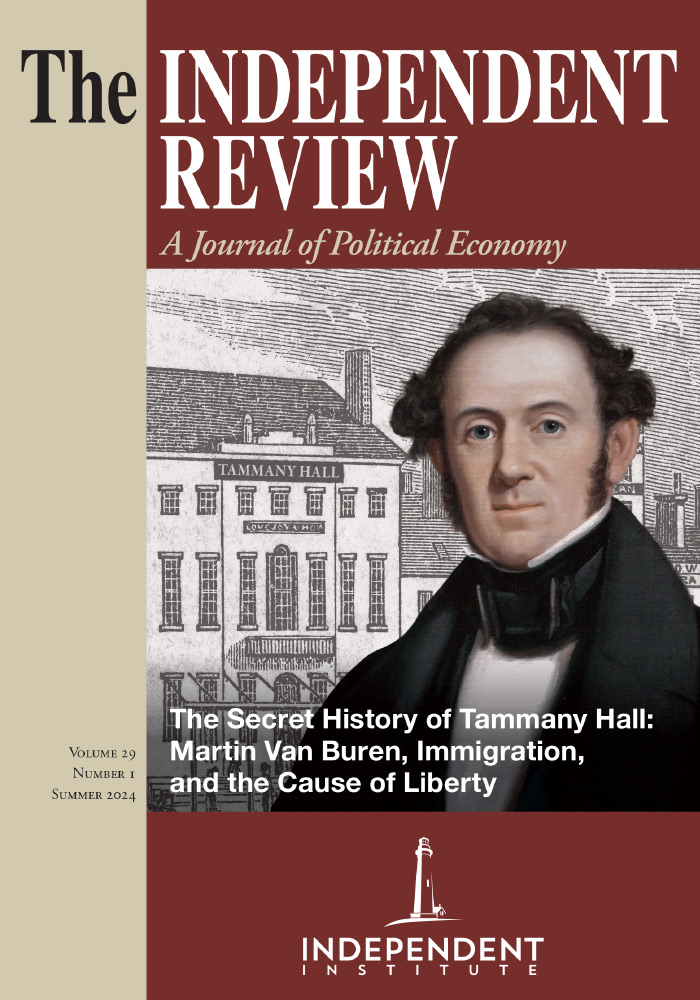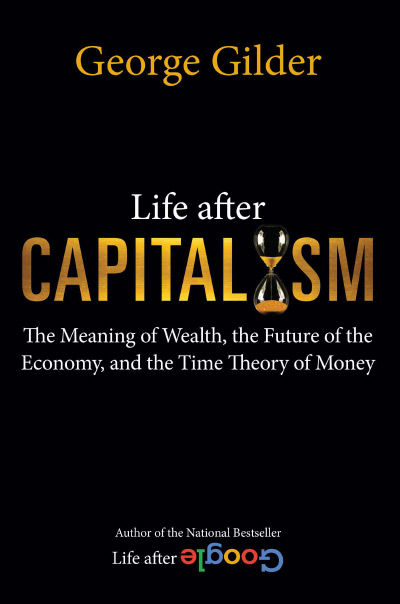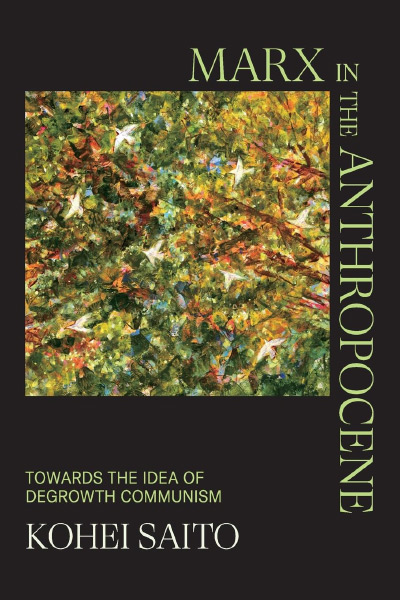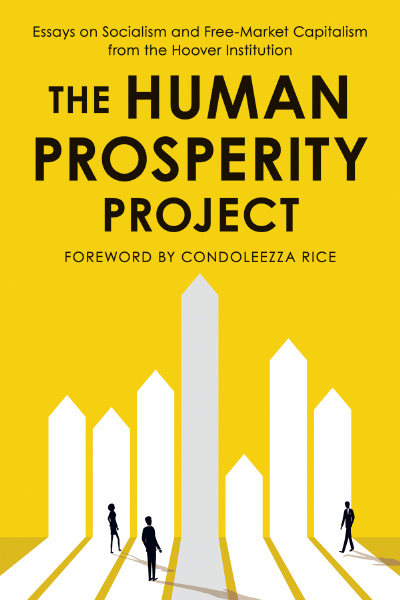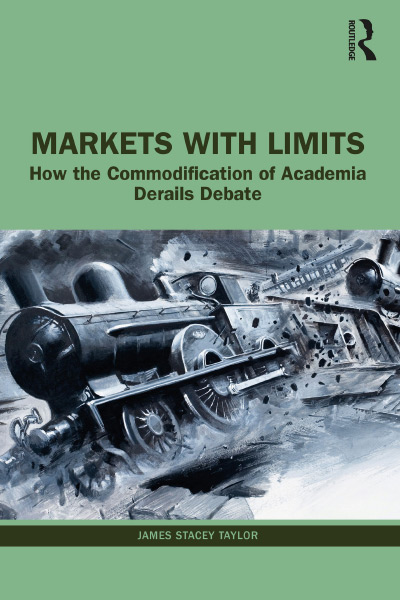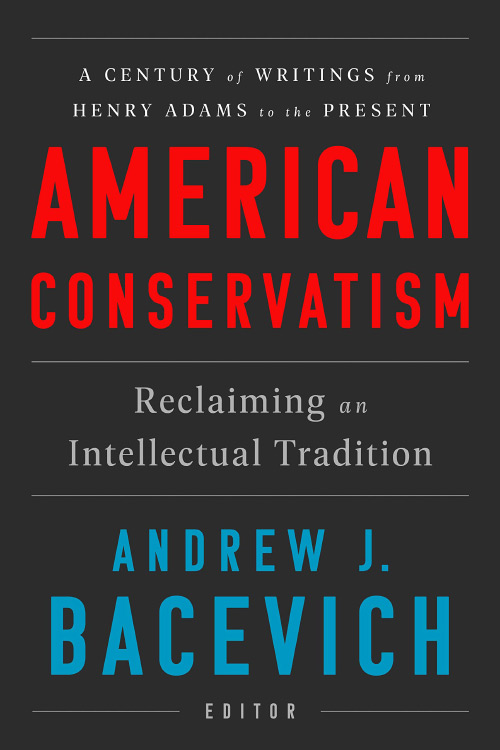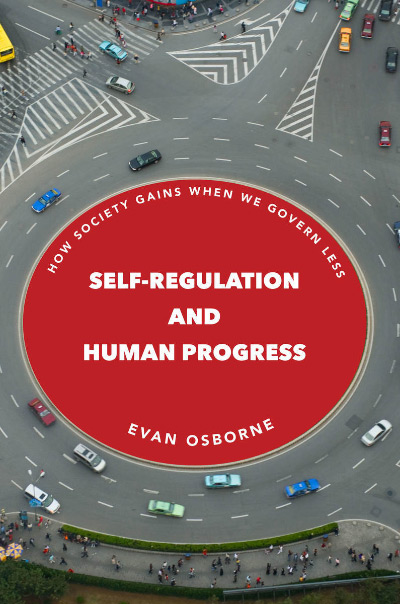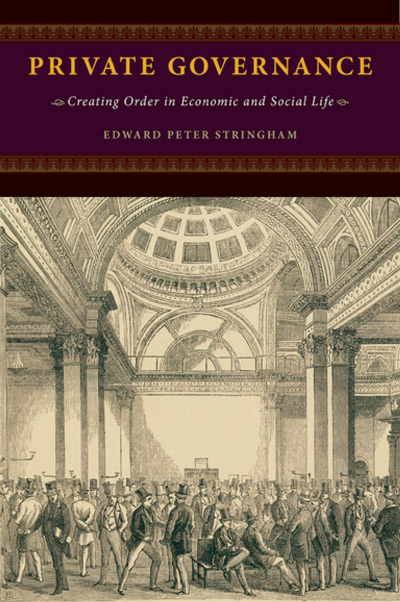Hearing the phrase “life after capitalism,” you might think of Karl Marx, who in the 1800s insisted that capitalism exploited workers, was prone to a violent revolt, and would be replaced by socialism. Capitalism, defined as private ownership and control of property, faces an obvious rival in socialism, which is public (or state) ownership and control of property. For Marx, socialism was idyllic and “inevitable.” What then do we make of a pro-capitalist thinker like George Gilder who foresees in his latest book a life beyond capitalism that isn’t socialist, fascist, or medievalist? Does he imagine instead a new version of capitalism? If so, his book’s title is misleading. Sadly, it is, in fact, just that.
How might we imagine a life after the life we know under capitalism? What will things look like? Will the system be good for us or bad? Can we influence the transition? Gilder thinks he has answers, and you can have fun playing along with him, because he’s a clever, engaging writer. Beware, however, of his annoying obscurantism. Among his “Twelve Laws of the Infocosm” are these: “scarcities are measurable and end at zero availability;” “abundances are ultimately incalculable and end in near zero price that escapes economics entirely;” “money is time, tokenized;” “learning is measured by time saved and is falsifiable or monetizable by markets;” “the moving curtain of time forces new learning;” “you can only keep what you give away;” “information is entropy” and also “the opposite of order, regularity and pattern” (p. 190–91). Better yet, “economics is a dance to the music of time” (p. xi). Heady stuff! Or is it merely verbal pomposity? I suspect it won’t be clear to many readers how bad poetry can serve as a substitute for substantive analysis.
Gilder has always fancied himself a technophile and seer. Since the late 1970s he’s also been a prolific free-market economist, social commentator, and policy advisor. His most thematic and influential book, Wealth and Poverty (1981) helped explain to a broad audience the new “supply-side economics” and called for terminating demand-side Keynesianism, to revive a stagnant America. It worked, via “Reaganomics.” Yet he now offers an odd interpretation of capitalism’s supposed death throes. He believes economic theorists since America’s Civil War have been stuck in the model of 1776–1848, a period bookended by the pro-capitalist Adam Smith and anti-capitalist Karl Marx. “The prevailing capitalist theory, conceived by Adam Smith and Karl Marx, is deeply inconsistent with actual capitalist practice,” Gilder writes (p. ix). Of course, Smith and Marx likewise embraced the crude, physicalist, labor theory of value, the notion that the market value of products is determined mainly by the quantity of manual labor (hours) necessary to make them. The theory downplayed the productive contributions made by skilled labor, mental labor, and the capital each created. It elided the quality of labor and as such, ridiculed the profits and riches of entrepreneurs, managers, and capitalists as “unearned”—unjustly filched from “real” producers (manual laborers) by underpaying (exploiting) them. Smith and Marx also acknowledged self-interest as a key motive, but whereas Smith said it fostered national wealth, Marx said such wealth was stolen by capitalist stealth.
To his credit, Gilder realizes that the labor theory of value is false, that wealth results primarily from intelligence, creativity, invention, innovation, entrepreneurship, and foresight. But he’s plain wrong to claim that economics has been mired in the materialist myth since 1848, bereft of any alternative, viable value theory. He isn’t the first economist to critique the labor theory of value. Many others long ago exposed, refuted and replaced it with the truth (utility theory and a recognition of the value-added of entrepreneurship), including Jean-Baptiste Say, William Mallock, Eugen Bohm-Bawerk, Joseph Schumpeter, Ayn Rand, Julian Simon, and Paul Romer. Yes, holdouts remain, but by misrepresenting the history of economic thought, Gilder misidentifies today’s real problems. Surely life today under “capitalism” (if that’s what we have) isn’t as great as it could be, but arguably that’s due to the palpable erosion of economic liberty (capitalism) in recent decades. Since 2007 the United States has dropped steadily down the list of nations on the Heritage Foundation’s Index of Economic Freedom. Gilder worries not about that but about economists supposedly restricting us to a Smithian-Marxian paradigm of muscles, materialism, and greed. Life after capitalism could be idyllic, he says, if only economists and technologists jettisoned these stubborn, constraining myths and built a world of “superabundance” based on spirituality (not materiality), faith (not certainty), altruism (not egoism), and community (not atomistic individualism).
Oddly, Gilder contends that every major school of economics (except the Keynesian school) is delusional. “This mistaken understanding of how wealth is created,” he writes,” unites libertarian economists, supply-side economists, and socialist economists” (p. 5). Inexplicably, he indicts even his former colleagues (and the Laffer Curve)—those who almost single-handedly revived respect for the entrepreneur, profit making, and prosperity. “The supply-sider believes in a cornucopian world,” he writes, “where incentives are so powerful in spurring growth that people will end up paying more to the tax collector at lower tax rates than at higher ones, as incentivized investors pile up capital to reap its ever-higher rewards” (p. 5). Is his new view that savings and investment are no longer productive? Is it that economic growth is no longer preferable to stagnation? Are rewards no longer earned? Gilder seems troubled not by the state of economics but by the ethics of supply-side economics. He knows that “incentive” implies self-interest, and like Adam Smith, that it yields practical benefits (the wealth of nations). Yet both deny that it’s a virtue. Besides, Gilder suggests, nothing noble creates a mere “pile up” of capital and wealth. Like Marx, he sees self-interest and capital accumulation as crass and materialistic. In his Communist Manifesto (1848), Marx directly impugned egoism and indicted capitalism for having “drowned the most heavenly ecstasies of religious fervor, of chivalrous enthusiasm, of philistine sentimentalism, in the icy water of egotistical calculation.” Smith, Marx, and Gilder agree on ethics. Gilder is among today’s conflicted thinkers who are stuck in the anti-egoist paradigm of 1776–1848 and thus persist in feeling (and fueling) a deep-seated disrespect for capitalism.
Preferring to address the less-crass, less-material world, Gilder is enamored of information. He declares that “information is surprise” and likes how the information sector is propelling “a new economic revolution that is overturning the incentive mechanisms, materialist assumptions, scarce resources, and static demand-side models of Adam Smith and Karl Marx.” “The new information theory is leading us to a new understanding of economics” (p. ix). But how can an economic sector revolutionize economic theory? Have information, intelligence, and entrepreneurship become critical only in the digital economy? Were they not real factors in the three previous revolutions—in finance, agriculture, and industry? Gilder doesn’t say, but yes, they were crucial back then (and still are now). Despite Gilder’s understandable affinity for the digital age, he’s a Marxist when he fears “Big Tech,” “these massive companies” that operate too freely in a “vast and imperial information industry” (p. x). Imperial? Does Gilder advise trust-busting? The Teddy Roosevelt attitude is more fusty than futuristic.
At the outset Gilder promises readers “a new economic theory” (p. ix), but no such thing appears in the book. His prologue, titled “The Theory,” is only three pages and includes what he calls “four canonical propositions,” but they’re more like paltry platitudes: “wealth is knowledge;” “growth is learning;” “information is surprise;” and “money is time.” The last one might remind you of Ben Franklin’s adage that “time is money,” which truly meant something; but Gilder flips the script and rewords the phrase, Yoda-like, to convey a faux profundity. It’s not that Gilder doesn’t try, later in the book, to elaborate and validate his quadruple canon. But the attempt fails. We get some interesting insights, but also, lots of obscure verbiage, highfalutin techno-talk, and impressionistic prognosticating. As to launching a “new economic theory,” it’s interesting that Gilder did exactly that with supply-side economics in the 1980s, but now we know he derides and dismisses that theory (not merely its possible misapplications, due to politics) and inexplicably conflates it with failed theories like Marxism. Talk about flipping the script!
In better parts of the book Gilder is a good critic of what he calls the “hypertrophy of finance,” which he rightly traces to the political sabotage of the gold standard in 1971 and the subsequent proliferation of fiat money and financial derivatives. But Reaganite David Stockman already exposed this in detail in his 2013 book, The Great Deformation: The Corruption of Capitalism in America (New York: Public Affairs). Gilder also has solid, chapter-long critiques of environmentalism and COVID lockdowns, but he misclassifies these as “emergency socialism.” In truth they strictly regulate property (instead of nationalizing it) and trample liberties; as such, they exemplify the hybrid system known as fascism.
Despite these few good chapters, the book reads like a series of unrelated essays, easily digested but also easily forgotten. Gilder is adrift, perhaps because he has soured on the supply-side of life. Anyone who seriously discusses capitalism must first recognize that it entails far more than just markets. Friends and foes alike concur that it’s a socio-political-economic system, not merely co-extant with an economy, a sector, or a firm. Gilder’s book lacks a clear, unifying theme because it doesn’t respect this macro-micro distinction. Not coincidentally, the title echoes that of his previous work: Life After Google: The Fall of Big Data and Rise of the Blockchain (2018). There his focus was on the microeconomic story. In Life After Capitalism, he attempts something bigger, more macro, but he seems unsure about what that is. The result is a less focused, less clear, and less convincing argument. Gilder is a very smart guy, but here he attempts much too much. His idyllic reach exceeds his practical grasp. The task he assigns himself is as impossible as foretelling the details of the afterlife some call heaven.
Smart as he is, Gilder is perplexed as to why “capitalism’s triumph” today is eliciting from critics “the system’s most complete rejection to date.” He sees how a “global surge of capitalist abundance liberates the poor” yet also that “critics have found a new capitalist victim—the earth itself,” but now “the criminals are not just the capitalists ... but mankind itself” (p. 2). Yes, it’s absurd. Is it misanthropy? Gilder seems unaware that when a life-enhancing system is constantly scapegoated for every evil, real or imagined, critics reveal a deep hatred for it precisely because it counts on and rewards the rational, self-interested, individualistic pursuit of material comfort. Even if Gilder glimpses this, he seems to prefer to appease critics by projecting a post-capitalist world devoid of the hated elements, a world that’s more spiritual, faith-based, selfless, giving, and loving. He doesn’t consider the possibility that such a world is either unlikely, in which case critics will persist, or likely, in which case critics will have won and capitalism will be gone. The latter scenario might best be called “death after capitalism.”
| Other Independent Review articles by Richard M. Salsman | ||
| Fall 2024 | Nozick on Taxation: The Necessity of Funding the Legitimate State | |
| Fall 2023 | Alexander Hamilton as Economist: A Proper Verdict | |
| Summer 2023 | A Comparative History of Central Bank Behavior: Consistency in Monetary Policy in the US and UK | |
| [View All (5)] | ||

